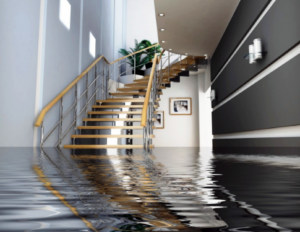What To Do When You Find Asbestos?
Allied Restoration teams up with Patriot Environmental Laboratories to explain the asbestos testing process in a damaged home. OP and Derek Russell discuss the importance of sampling for asbestos and contamination and the clean-up protocol in a home before beginning restoration projects.
Why We Test Asbestos
First and foremost, the law requires it. The Environmental Protection Agency as well as the State of California makes it mandatory to test certain building materials before they are disturbed. Which is the case with many different kinds of construction projects and renovation projects.
Asbestos is also a known carcinogen which is responsible for huge death tolls the Unites States alone. That is why it is regulated!
What Is Asbestos?
Asbestos is a mineral fiber that has been used commonly in a variety of building construction materials for insulation and as a fire-retardant. This naturally occurring mineral was mined and used heavily between the 1930’s and 1980’s. Projects with asbestos related malignant mesothelioma mortality in the United States for the period of 1985-2009 was estimated to be 21,500.
What Sampling Asbestos Entails
The Allied or Patriot Environmental State Certified Inspector needs to take a sample from the home. We approach the building material by trying to find a place where not to create too much damage and take a small sample while we’re spraying it to reduce dust emissions. Then we place the sample into a baggie and transport it to our Federally Accredited Laboratory for analysis.
Within 24 hours we have the report on our desk, and can better determine which people need to get involved in the project to make sure that the project goes as fast as it needs to.
What Happens When The Material is Obviously Disturbed?
The local EPA, otherwise known as the South Coast Air Quality Management District, does require a protocol that is called Procedure Five Work. This simple work plan includes photographic images and a site plan which basically explains how the contamination should be cleaned up and how it should be handled. With this, the basement contractors can move forward and know exactly how to handle these proper materials the right way the first time.
*Be careful because if this protocol isn’t followed or written, agencies may impose fines of $1000-$100,000 per day and prosecute negligent Building Owners for non-compliance with the applicable regulations.
Final Clearance Test
Can only be done by a State Certified Inspector. The objective is to double check the work of the original contract worker and make sure there is no residual asbestos left behind on the property. When the property is cleared your home is safe, breathable and ready for re-occupancy. Usually this involves the following two tests:
- Visual inspection
- Air sample
Samples are compared to an EPA standard and once approved, the home is ready to begin construction and restoration!
Pro Tip Reminder:
Before you start knocking down or cutting into drywalls for water damage or mold remediation, check for asbestos because that will save you in the long run!
A professional remediation and restoration company like Allied Restoration can always help out with free consulting on any problems you may come across!
To learn more about the asbestos process and pricing, please contact us. We are excited to begin working on your home restoration and make you feel happy and safe in your home.




